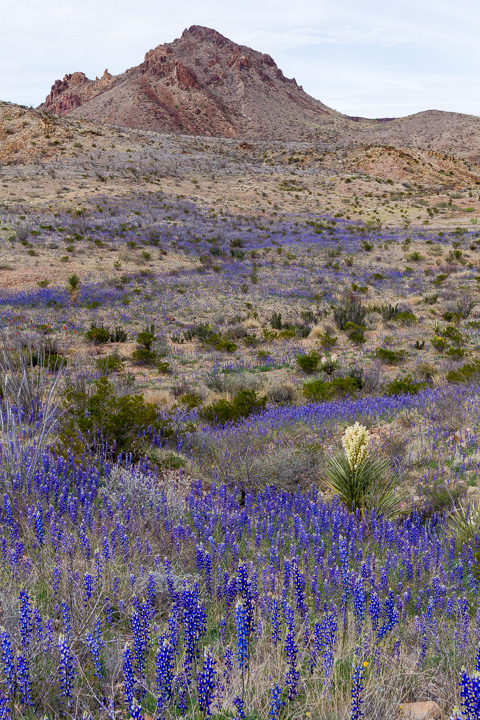
When Texans speak of spring wildflowers they usually mean Bluebonnets. And the only bluebonnet that grows abundantly here in the Trans-Pecos is the Chisos Bluebonnet, Lupinus havardii. This bluebonnet occupies a very narrow range along the corridor of the Rio Grande in the Big Bend. But here, it’s the champion bluebonnet and provides the majority of our spring color.
Lupinus havardii plants are the tallest of all bluebonnets. Here is a photo of me, taken in the 80s, standing next to a group of this species. As you can see, they are tall; sometimes three or four feet tall!

Lupinus havardii flowers are usually a deep blue/purple color. Now and then you may spot a white one, in which case it is your duty to tell all your friends just where you saw it. Visitors sometimes wear narrow paths from the road to an area where a white bluebonnet lives. Lupinus havardii has genes that enable it to create blue, yellow, red, and white. The deep blue/purple flower is the most common and the only color you’re likely to see unless you go hunting for different ones. But this year plants with different colors are occurring more frequently than usual, so I thought I’d share a few pictures of these varieties. I’ve not yet found a pink one, but I know they’re out there, and I’ll certainly keep looking.
Here is your basic bluebonnet. The backlighting reveals the arrangement of pigments. The red and yellow patches are quite visible on this blossom.
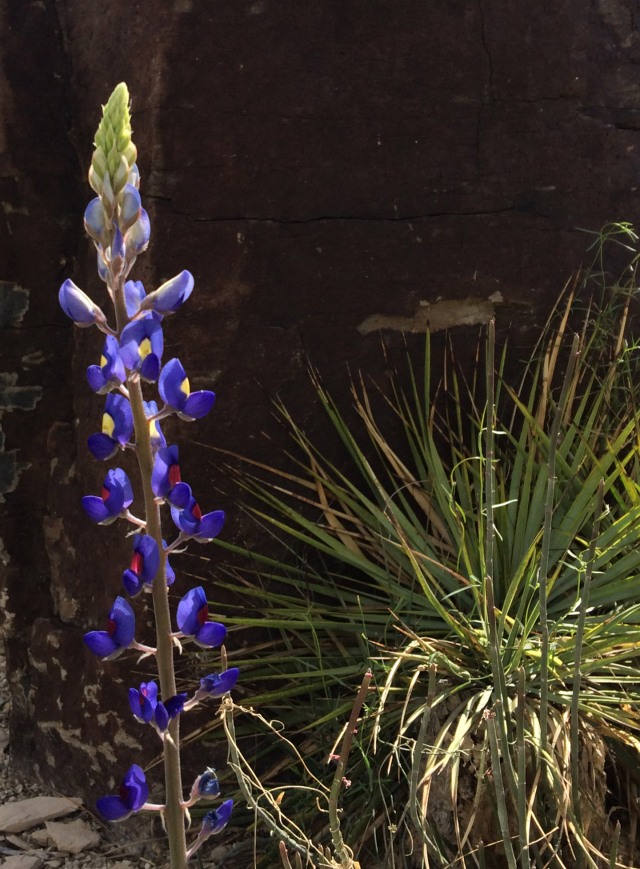
And here is a stand of a lighter shade.
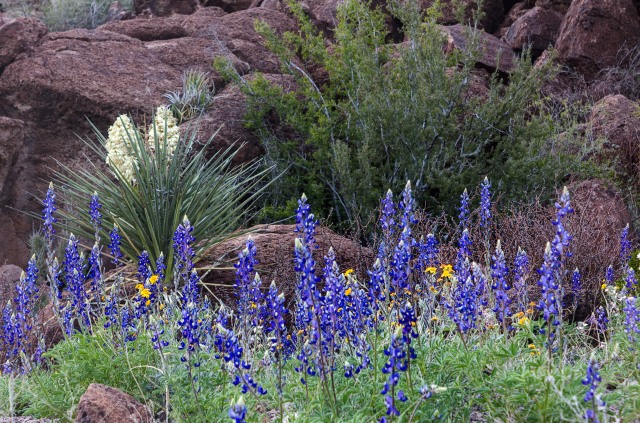
Here is the much less common white bluebonnet.

A stand of blue and white bluebonnets living in the same area.
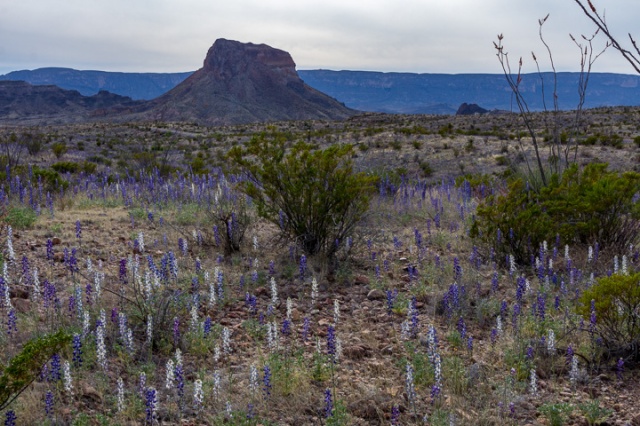
Now and then, a plant sports multiple colors on a single raceme

I’ve heard that a single plant may create a multicolored raceme, and the usual deep blue racemes on different stalks, but that is another one I have not found yet.
Here is a typical scene on the River Road in the national park.
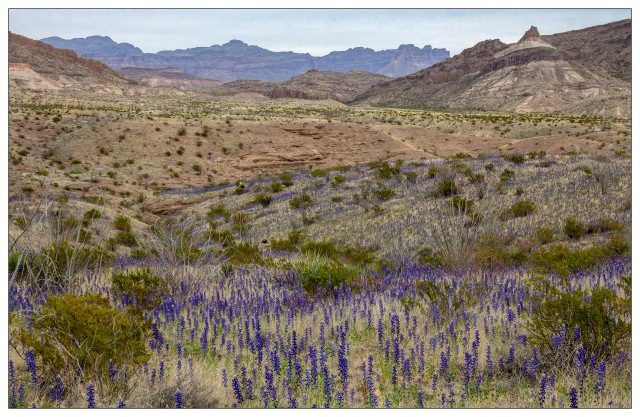
I hope you can come out to see this bloom, but from what I understand, Central Texas is just as spectacular. Texas is a great place this time of year.




I’m glad I finally checked in to your blog, though I missed the display. That would have been worth the 5-6 hour drive down! Their size and the way they scatter and spread through the Chihuahuan Desert’s hills and sparse plants is amazing!!!
Thanks for sharing your beautiful photos and iformation about the Lupinus. It makes me so homesick for Far West Texas.
Thank you for these lovely views. How I wish I could be hiking out there right now!!
Gary,
I love this post. I learned about Bluebonnets that I did not know existed! The deep blue is still my favorite, but your photo of the light blue & white bloom is spectacular.
We have bluebonnets on the ranch near Mother’s gate. Speaking of my Mother, she is healthy although she lacks stamina due to her bad heart valve and still lives independently. She will be 95 on July 13th.
Visit next time you are near. Tina
And, I love the shot of your gorgeous gams. Gary, getting to spend a bit of time with you was the high point of our trip. Even the oceans of Bluebonnets couldn’t compete. Hope we get out there again before monsoon.
Deborah Douglas, M. D. (210) 845-3077
>